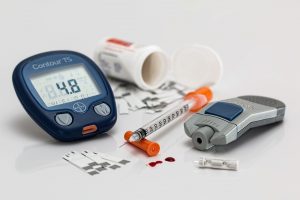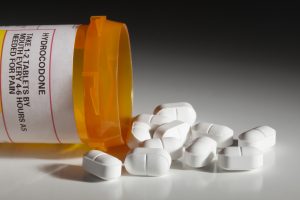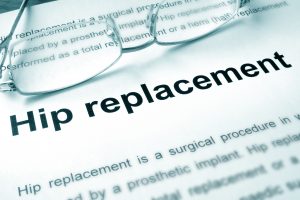 Diabetes is a serious condition that affects the way the body metabolizes sugar. Over 29 million Americans currently suffer from the disease. Of the newly diagnosed cases of diabetes in adults, around 95% are for Type 2 diabetes. Type 2 diabetes occurs when the body produces enough insulin but cannot use insulin properly. Type 2 diabetes results in high blood sugar levels which can cause long-term health problems. So what does all this mean? From the perspective of pharmaceutical companies, it means there is a massive market for Type 2 diabetes drugs. Enter the latest diabetes “wonder drug,” Invokana. Continue reading
Diabetes is a serious condition that affects the way the body metabolizes sugar. Over 29 million Americans currently suffer from the disease. Of the newly diagnosed cases of diabetes in adults, around 95% are for Type 2 diabetes. Type 2 diabetes occurs when the body produces enough insulin but cannot use insulin properly. Type 2 diabetes results in high blood sugar levels which can cause long-term health problems. So what does all this mean? From the perspective of pharmaceutical companies, it means there is a massive market for Type 2 diabetes drugs. Enter the latest diabetes “wonder drug,” Invokana. Continue reading
Articles Tagged with MDL
Jury Awards Androgel User and Heart Attack Victim $140 Million
Last Thursday a jury in Chicago found that AbbVie, Inc., the manufacturers of the testosterone product Androgel, must pay the plaintiff, Jeffrey Konrad, over $140,000,000.00 for injuries he suffered after using the company’s testosterone product. The jury found that AbbVie did not adequately test the testosterone roll-on gel product and misrepresented its safety to patients and doctors.
The Second Testosterone Bellwether Trial
 Mr. Konrad was in his late forties when he began using Androgel in 2010. He was prescribed testosterone to treat a decrease in his testosterone levels. Two months later he suffered a heart attack. He filed suit years later, alleging that AbbVie knew about the link between testosterone use and heart attacks but sold the product anyway, and without sufficient warnings. The jury did not find that Mr. Konrad proved the connection between his use of Androgel and his heart attack. Other factors, such as Mr. Konrad’s obesity, high blood pressure, and family history, could have caused his heart attack. Nevertheless, the jury found that AbbVie was liable for damages based on AbbVie’s negligence and misrepresentation.
Mr. Konrad was in his late forties when he began using Androgel in 2010. He was prescribed testosterone to treat a decrease in his testosterone levels. Two months later he suffered a heart attack. He filed suit years later, alleging that AbbVie knew about the link between testosterone use and heart attacks but sold the product anyway, and without sufficient warnings. The jury did not find that Mr. Konrad proved the connection between his use of Androgel and his heart attack. Other factors, such as Mr. Konrad’s obesity, high blood pressure, and family history, could have caused his heart attack. Nevertheless, the jury found that AbbVie was liable for damages based on AbbVie’s negligence and misrepresentation.
Opioid Lawsuits Heading to Centralized Multidistrict Litigation (MDL 2804)

I blogged previously about the United States opioid crisis and how many local and state governments were looking to the courts to help deal with it. Specifically, these governments have brought lawsuits against manufacturers and distributors of opioids.
When we last wrote about the opioid crisis, I explained how these lawsuits had only just begun. The following post is an update on how these lawsuits are progressing. But before we get to that, let’s discuss why opioids are generating these lawsuits.
The Legal Basis for Suing Opioid Manufacturers and Distributors
With Third Depuy ASR Settlement Deadline Past, Do I Still Have a Viable Claim?

I get calls from people all over the country worried that they may have missed a deadline for participation in the Depuy ASR Artificial Hip Settlement. I understand the alarm. It would be dreadful to have the ASR metal-on-metal hip implanted, suffer mysterious pains and then elevated metal levels in the blood, discover the artificial hip components failed, go through a painful revision surgery, and then find that the settlement deadlines have all passed. The reality is this: at the moment, all the deadlines have passed. But many viable ASR claims against Depuy and Johnson & Johnson are still out there, and they should be fairly compensated like all the injured people that have come before.
Third Settlement (Second Extension)
In the most recent extension of the ASR Master Settlement Agreement, the deadline to enroll in the settlement was July 19, 2017. This second extension of the Master Settlement applied to individuals who had the ASR hip removed in revision surgery between between January 31, 2015 and February 15, 2017. The reason for this specific set of dates is that the settlement committees for plaintiffs and defendants wanted to include victims who had revision surgery somewhat late in the game. Recall that the Depuy ASR hip was first sold in 2005, twelve years ago. It was sold aggressively for five years, until it was finally recalled on August 24, 2010. Thousands of people were implanted with the ASR hip in that five-year period. Most of them were forced to undergo revision surgery before August 31, 2013, the deadline for participation in the first settlement. But hundreds of people did not undergo revision surgery until after August 31, 2013. Therefore, a first and then a second extension of the original agreement was established.
After Noisy August, Fourth Depuy Pinnacle Hip Bellwether Trial Underway
Some of my clients have been asking me what is going on with the fourth Depuy Pinnacle bellwether trial. Non-clients have also been calling to inquire about the status of the trial. Did it start this week? Was it postponed? What is the deal with Depuy and Johnson & Johnson trying to stop the trial? Let’s take a quick look:
Fourth Bellwether Trial Underway

The short answer is yes, the fourth bellwether trial began on Monday (September 18, 2017). Six plaintiffs injured by the Depuy Pinnacle hip (and four spouses) are bringing their claims against defendants in Dallas, Texas before Judge Kinkeade. You can read about previous Pinnacle bellwether trials and their huge jury awards here and here.
Androgel Testosterone Trial: $150 Million Punitive Damages Award
A few weeks ago I wrote about an Androgel testosterone case being tried in Illinois. We now have the verdict, and the result is, well, a mixed bag. Still, on balance, it must be viewed as a win for plaintiffs, and a major rebuke for companies like AbbVie, Inc. who aggressively market their prescription drugs for off-label uses. After all, at the end of trial the jury awarded the plaintiffs $150 million in punitive damages for fraudulent misrepresentation.

Just to recap, Androgel is a roll-on testosterone product. Jesse Mitchell began taking Androgel in 2007 after doctors ran blood tests and found that Mitchell’s testosterone levels were quite low. In 2012, at the age of 49, Jesse Mitchell had a massive heart attack. From what I’ve read, the heart attack almost killed him.
Mitchell and his wife sued AbbVie in 2014, claiming the company marketed and sold Androgel without properly warning men about the increased risk for heart attacks. During the trial an expert for the Mitchells testified that in his opinion there was a connection between Mitchell’s 2012 heart attack and his extended use of Androgel.
Depuy Pinnacle Artificial Hips: A Timeline of Profits, Injuries, Lawsuits
Last week I wrote a timeline on the key events surrounding the failure of the Depuy ASR artificial hip. Today I want to take a similar look at the Depuy Pinnacle artificial hip. The Pinnacle was supposed to be the ASR’s more active and athletic brother. But it didn’t turn out that way.
1995: Study on Metal-on-Metal Hips Released

For all metal-on-metal artificial hips, we have to start with the central question: what did the manufacturer know, and when did the manufacturer know it? In 1995, Dr. Graham Isaac released a short paper discussing the problems with metal-on-metal (MoM) artificial hips. Dr. Isaac explained that the performance of MoM hip implants was “unpredictable,” that the hips may work well for some time “before suffering catastrophic breakdown . . . accompanied by a release of a large volume of debris.” This paper and Depuy’s other internal documents suggest that Depuy Orthopaedics should have known about the metal-on-metal risk factors in 1995. In fact, one doctor noted that Depuy needed “to be cautious of the legal/litigation issues and lawyers, etc…perception of metal debris and metal-ion release.” That’s not good.
Depuy ASR Metal-on-Metal Hip: Timeline of Injury, Revisions, Lawsuits
I have written extensively about metal-on-metal (MoM) artificial hips. Specifically, I have covered the painful and sordid history of the Depuy ASR metal-on-metal (MoM) artificial hip. In this post I set out a timeline of important dates in the the journey of the Depuy ASR hip: from (quickly) finding its way into the market, then into thousands of patients, followed by thousands of revision surgeries, and ultimately to a massive multidistrict litigation (MDL) in federal court in Ohio involving thousands of injured people. Let’s take a look at the calendar of events of the Depuy ASR product failure.
1995

In 1995, Dr. Graham Isaac released a short paper discussing the problems with metal-on-metal (MoM) artificial hips. Dr. Isaac explained how metal wear debris created from MoM hip joints was a serious problem because of poor design and manufacturing of the metal components. Dr. Isaac also stated that even with higher quality manufacturing and engineering techniques, the performance of MoM hip implants were as “unpredictable as ever, working well for a period of time before suffering catastrophic breakdown . . . accompanied by a release of a large volume of debris.” This paper and Depuy’s other internal documents suggest that Depuy Orthopaedics most likely knew of the MoM risk factors in 1995, twenty-two years ago, and ten years before the company began selling the Depuy ASR artificial hip. In fact, one doctor noted that Depuy needed “to be cautious of the legal/litigation issues and lawyers, etc…perception of metal debris and metal-ion release.” I wrote more about what Depuy may have known about the serious risks of the ASR hip here.
Physiomesh Hernia Mesh Causes Painful Scar Tissue, Other Injuries

Hernia mesh is causing problems. People who have been implanted with hernia mesh have suffered adhesions (scar tissue that sticks together), inflammation, pain, allergic reactions, internal bleeding, infections, and many other injuries.
One of the hernia mesh products sold for years, Ethicon’s Physiomesh, has caused many of these health problems in patients. In revision or removal surgeries, the Physiomesh has been discovered to have shrunk, folded, or curled. Surgeons have found scar tissue surrounding the mesh. This scar tissue can cause severe pain and discomfort. In many cases, by the time the mesh is removed, the damage has been done and long-term problems remain.
What Is Hernia Mesh?
Invokana: Diabetes Drug Has Caused Alarming Side Effects, Lawsuits
 Diabetes is an awful disease. It is a chronic condition that affects the way the body metabolizes sugar. Diabetes is also a growing health problem in the United States, with over 29 million Americans currently suffering from the disease. Of the newly diagnosed cases of diabetes in adults, approximately 95% are for Type 2 diabetes (sometimes referred to as adult onset). It’s also expected that one out of every three people will develop diabetes in their lifetimes.
Diabetes is an awful disease. It is a chronic condition that affects the way the body metabolizes sugar. Diabetes is also a growing health problem in the United States, with over 29 million Americans currently suffering from the disease. Of the newly diagnosed cases of diabetes in adults, approximately 95% are for Type 2 diabetes (sometimes referred to as adult onset). It’s also expected that one out of every three people will develop diabetes in their lifetimes.
Type 1 diabetes occurs when the human body doesn’t produce enough insulin, a hormone used to help the body absorb glucose. Type 2 diabetes occurs when the human body produces enough insulin, but cannot use insulin properly. Both types of diabetes result in high blood sugar levels which can cause long-term health problems.
What does all this mean? From the perspective of pharmaceutical companies, it means there is a huge market for Type 2 diabetes drugs.
 North Carolina Product Liability Lawyer Blog
North Carolina Product Liability Lawyer Blog

